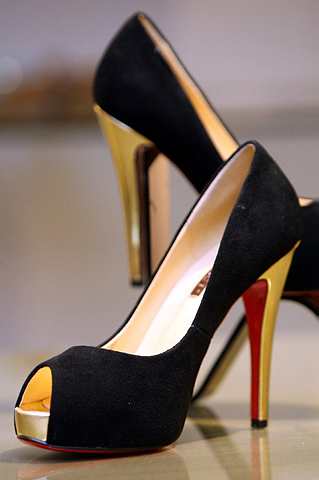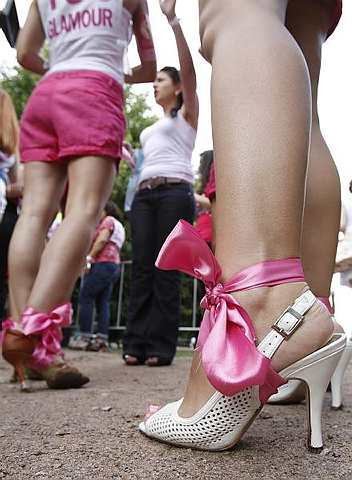I KNOW very few women who don’t own even a pair of high heels. This popular type of footwear has become (almost) every woman’s must-own..
and over the years the stilettos and platforms are just getting higher and higher.
On Sunday, I wore a pair of 15.2cm (that’s six inches) heels to a friend’s wedding.
Walking was challenging, and thankfully there were no accidents navigating staircases at the venue (thanks in part to my “minder” who generously extended his arm for support). The thing is, despite the discomfort, I was confident the shoes did wonders to enhance my already-fantastic outfit.
There were several “almost-accidents” but I’m proud to report I made it out of there in one piece. However, this isn’t always the case; many times, I’ve scraped a knee or two teetering in my heels.
This got me thinking about whether there is a “safe” height and shape for stilettos, and whether all those things our mothers tell us are true (you’re going to damage your back, you’ll get bunions etc).
Research shows that the accepted height for high heels is 7.6cm (or three inches), but a study conducted by physicists at Britain’s University of Surrey said that 12.7cm (five inches) is about the height at which an experienced high heel wearer could remain stable.
They figured this out through the formula h=Q x (12+3s/8), which I totally get (it’s a long story though, so go look it up). But essentially, Professor Paul Stevenson, who came up with the formula, says that you can wear as high a heel as you want, but the broader it is, the more stable the wearer will feel.
Designer Manolo Blahnik says he was “hounded for years” about how bad heels are for the posture, but claims his mother wore them until she was 87 years old, with no ill consequences.
He believes, however, that the limit is 11.4cm (four and a half inches), because when you can’t walk comfortably, it is no longer elegant.
Here’s what I’ve come up with, after some research:
The good news
Who doesn’t love the shape of our calves when we wear high heels? Looking great boosts your confidence, and in order to walk properly in heels, you have to fix your posture – you straighten your back, push your shoulders back and engage your abdomen muscles.
Having good posture allows for optimal muscle and organ function, allowing for high energy, and toning of the core muscles. And yes, they work your calf muscles.
Being able to walk gracefully in high heels is a huge confidence boost, and nothing beats the compliments that come your way when you know you’re awesome.
The bad news
Yes, your mother was right about everything – wearing the wrong kind of heels can cause back and knee problems.
Calluses, corns and blisters aren’t a pretty sight either. Also, falling flat on your face in public, even if you don’t sprain anything, can hurt your self esteem.
Do, or don’t?
We are only here to deliver information, the choice of whether to wear heels is entirely up to you. You can go with the common 7.6cm-is-enough rule, Blahnik’s rule or the good professor’s advice, but all we can offer are the following tips:
• Practice and home and start small, then slowly build up height.
• Go with a thicker platform and thicker heel, they provide more stability.
• Don’t be cheap. There’s a reason why good brands are expensive – a lot of research is poured into making their shoes fashionable and comfortable.
• Don’t wear them all the time, be practical when choosing which heels to wear.
• Lady Gaga may be your fashion idol, but bear in mind she has fallen over in her heels too, so when channeling your inner mama monster, choose wisely. Those Alexander McQueen armadillo shoes are really not made for real life.
• Have fun in your heels! Don’t wear them because everyone else is doing it, but because you love looking fabulous.
• Don’t run in them.






Tell us what you think!